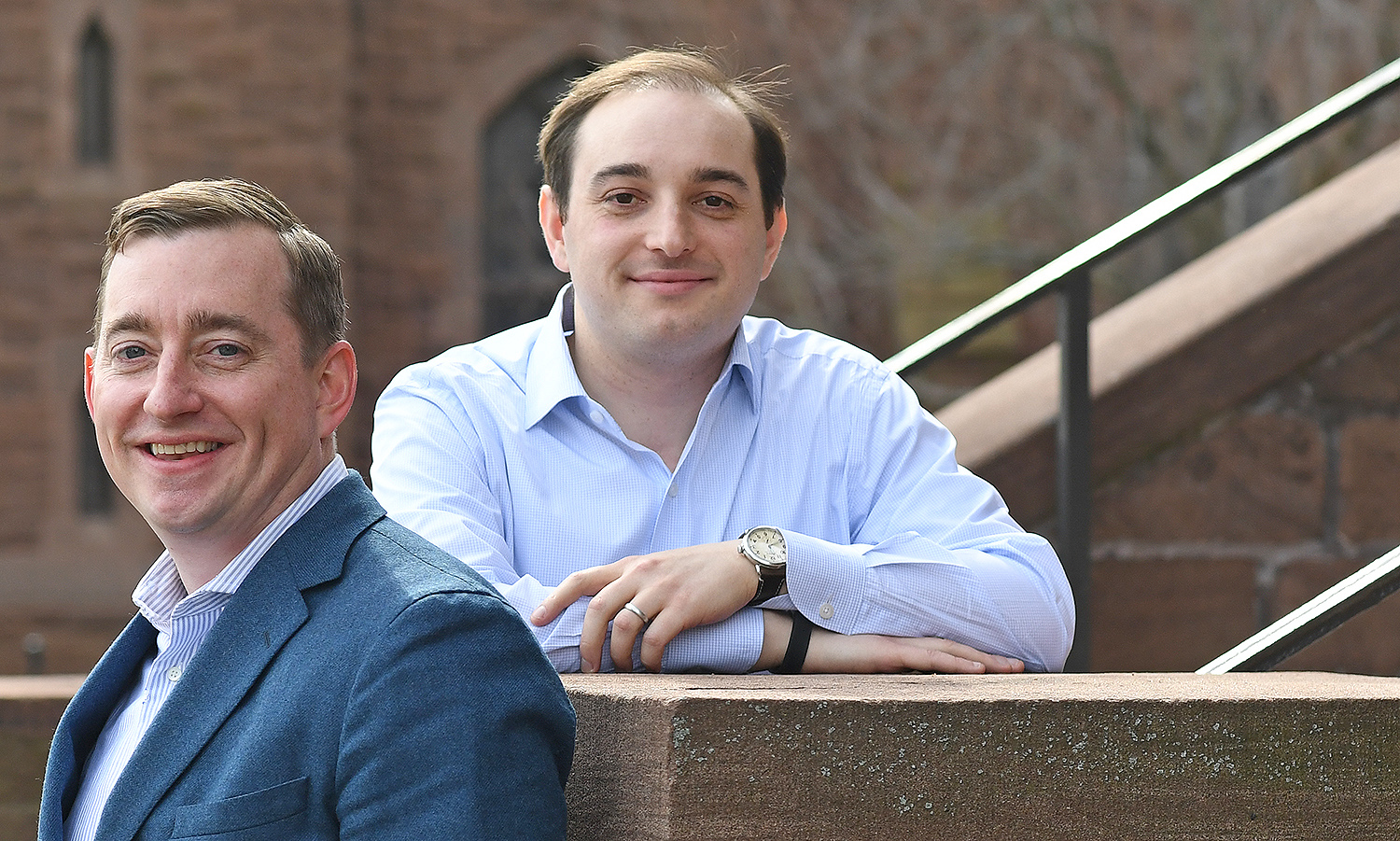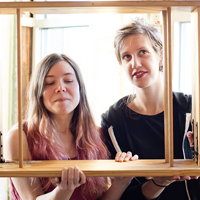A SITE FOR HAPPINESS NATALY KOGAN ’98
In Nataly Kogan’s native Russia, there’s a saying: “To write is like to pee. You should only do it if you can’t hold it anymore.” She gives the same advice to young people who ask her about starting a business.

Kogan ’98 speaks from experience. She says that, outside of immigrating to the U.S. and becoming a mom, starting a company is the hardest thing she’s ever done—emotionally and physically “brutal.” So when she decided to start her new company, Happier, about a year ago, “I did it because I couldn’t not start Happier. I was bursting with it. It changed my life.”
Happier sprung from Kogan’s own personal journey to learn how to be, well, happier. To understand the origins of this struggle, it helps to know a little about Kogan’s background. As she’ll tell you, research shows that 50 percent of happiness is genetically predetermined. Kogan, in her own words, is “not a happy person naturally. I’m a tortured Russian Jew.”
In 1989 at age 13, Kogan escaped Soviet Russia with her parents, carrying only a few personal belongings. After a grueling journey that took them through refugee camps in Austria and Italy, the family eventually landed in the projects outside Detroit, where they lived off food stamps and welfare, speaking little English and feeling isolated. Eventually, Kogan resolved to make up for the horror her family had gone through by working incredibly hard, achieving a lot, and chasing the American Dream. This, she believed, would make her “really, really, really happy.”
Just three years after immigrating, with her English still “rough,” Kogan applied to college. Her high school guidance counselor, whose husband had attended Wesleyan years earlier, pointed Kogan toward the school. The counselor specifically mentioned the College of Social Studies, which she thought would interest Kogan. After a weekend visit to Wesleyan, Kogan was sold. “I met with a professor from CSS and that’s when I knew I had to go to Wesleyan. I loved the focus on interdisciplinary learning and writing. I loved the atmosphere—it seemed chill enough but also academically focused enough,” she says. A generous financial aid offer from Wesleyan sealed the deal.
Kogan says she applied to be a CSS major for a completely irrational reason: “I heard it was the hardest major, and I just had to do it.” Ultimately, what she took away from CSS was an ability to synthesize thoughts and communicate them effectively—skills she now uses every day in her career. She also engaged with professors who challenged and excited her. Kogan recalls Professor of Economics Gil Skillman, her first tutor in CSS, as a special influence. “We disagreed in every possible way you can disagree—our politics are entirely different—but that didn’t matter because we both had this excitement to learn, and I learned a lot.”
Skillman remembers Kogan well more than 15 years later. “There was an ideal match between Nataly’s personal drive and intelligence and the CSS major, and she flourished while she was here. It was really a pleasure to work with her.”

After graduating from Wesleyan with high and university honors in 1998, Kogan’s drive for the American Dream continued. She married another Wes alum, Avi Grossman Spivack ’99, in 2001, and they had a daughter together. She held a series of prestigious positions at McKinsey & Company, Hudson Ventures, Microsoft’s Future of Social Experiences Lab (FUSE), and WHERE (sold to PayPal); together with Grossman Spivak started a publishing company, Students Helping Students (later sold to Penguin); and co-founded an online community for working mothers, “Work it, Mom!”
But after nearly two decades of chasing, Kogan realized that she had not managed to catch the American Dream and, instead, was just exhausted. She decided to re-evaluate her personal approach to happiness and turned her focus to research in fields as diverse as economics, sociology, and neuroscience. Her “holy crap moment” came, she says, when she realized that constantly chasing happiness was a futile endeavor. As she put it in her TEDx Boston talk, “I was chasing this nonexistent, impossible nirvana state of ‘happy’ and was missing all these small happy moments that were part of my every day. Because, the thing is, life is made of moments, and I could have chosen to focus on and collect the positive ones.” The research she studied showed that appreciating small positive moments can chemically change the brain, making people more positive and more optimistic.
This was a realization that Kogan simply could not keep to herself. She was driven to start Happier in order to share it with others.
Happier, which now exists as a website and a mobile app, is premised on the ideas that even the worst days contain small happy moments and that by focusing on these moments and capturing them—in words or a picture—anyone can be happier. The research Kogan studied also showed that one person’s happiness is contagious to those around him or her. Thus Happier, which Kogan often refers to as an “emotional bookshelf,” allows users not only to document their happy moments but also to share them with friends in a Pinterest-like social networking framework.
Some examples: “Found enough pennies in the bottom of my bag to get myself a lovely mocha at coffee break.” “Snuggling under the electric blanket. Fall is here!” “Seeing my son happy after a very difficult two years.” There are photos of sunrises, puppies, smiling children, fun socks, and unusually delicious-looking cups of coffee.
Since launching the company in February 2013, Kogan has been most surprised by the contagion effect—not only among friends, but between complete strangers.
“I completely underestimated the power that seeing absolutely random people’s small moments has on your ability to be more positive,” she says. “When we started Happier, we expected users to share these happy moments just with close friends and family. Two months into it, as a test, we introduced the ability for users to share their moments with everyone in Happier. It exploded—there’s no other word for it. Learning from this, we changed the experience to make all posts public by default. Now only 10 percent of accounts are private.”
In contrast to the early tech adopters who typically flock first to new online products, Happier’s core users are “normal human beings,” says Kogan. They are about 70 percent women with a core age group of 20 to 40.
Kogan has been blown away by the thousands of e-mails the company has received from users, attesting to how Happier has changed their lives. “We’ve had people write in to say that they’ve been depressed for years and this is the only thing that’s helping them, or that Happier has made them closer to their mom, or helped them make up with a friend,” she says. “We have teenagers writing to us to say this is the only place in their lives they feel it’s okay to be positive.”
“I think we’ve uncovered this incredible thing, that a small happy moment you share can truly impact someone’s life, can pull them up out of something difficult, or inspire them to find their own,” she adds.
In contrast to the sometimes “braggy” status updates or major accomplishments that people share on Facebook, Happier users are encouraged to post small, very personal moments that moved them. For instance, Kogan was recently running out to pick up her daughter after a crazy day at work. She got in her car, rolled down the window, turned on music, and took just 10 seconds to exhale. She shared this moment on Happier, and it was met with an outpouring of people saying, “Oh my God, I can totally relate” or “I need to start doing this.”
“They are moments that, I think, without Happier, we might miss.”
Happier is still a very young company and, for now, Kogan and her team are completely focused on improving the user experience and expanding the service’s reach. In the long term, she envisions Happier as a “lifestyle happiness company” that, in addition to running the website and mobile app, inspires people through customizable Happier-branded products that celebrate the happy things in every day life—from yoga mats to coffee cups to notebooks.
And while starting Happier has been one of the hardest things she’s ever done, it has also changed Kogan’s life for the better. Happier is a family business, and her 9-year-old daughter, Mia, is the company’s Chief Happiness Officer Junior.
“I see Mia think about her days differently now. She is growing up in this environment where we talk about Happier a lot,” says Kogan. “The other day, I came home after a bad day and was not in a good mood. She asked me, ‘Okay. Did anything good happen today?’”

As a working mom, Kogan for many years was determined not to talk about work at home and never to show Mia when she was stressed out or unhappy.
“Starting Happier, I’ve actually become a lot more honest with her about my emotions. That’s because the idea of Happier isn’t that we have to be happy all the time. It’s that even on bad days, there’s something we can appreciate. It’s really changed the honesty level I have with Mia as a parent, and I think for the better.”—Lauren Rubenstein


